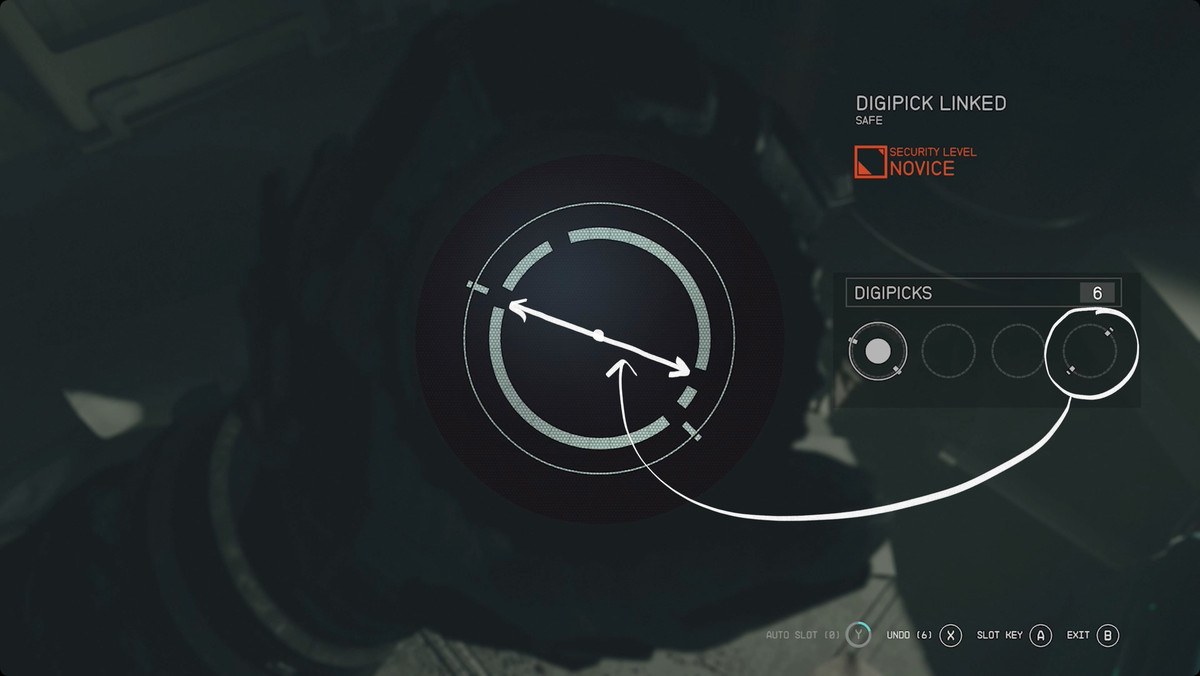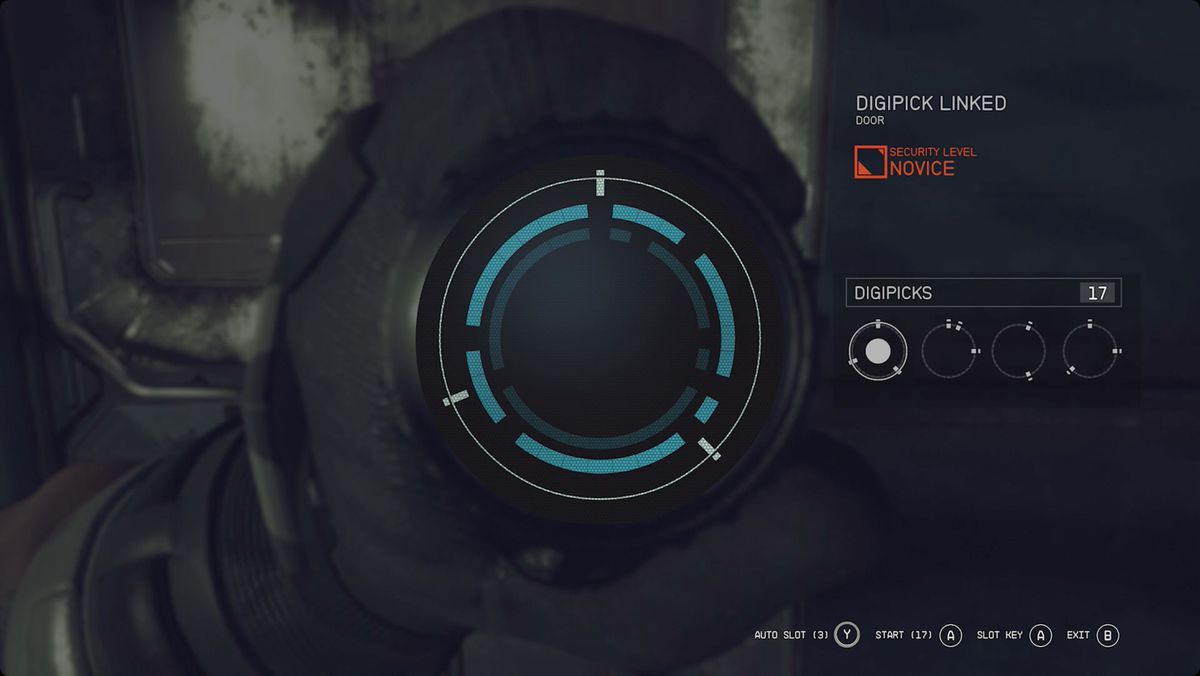How lock picking works in Starfield
Some of the best booty in Star field is locked behind, well, locks – things like safes, computers, doors, and some containers can all appear locked, meaning it’s up to you to unlock them. And Star field has its own lock picking and hacking mechanism to unlock them.
The first thing you need is one digipick – a lock picking tool. You can find these from enemies you loot, randomly throwing around, or you can buy them from vendors (under the Miscellaneous category of their inventory).
Us Star field digipick and lockpicking The guide explains how to unlock things with the digipick (including computer hacking) and walks you through the mind-boggling mechanics of the minigame.
What can you unlock with a digipick?
Things locked up Star field have a problem related to this: Beginner, Intermediate, Expert or Master. Anyone can try to open a Novice lock with a digipick. More advanced locks require you to put spikes into the locks Security skill – more on this below.
Each attempt consumes one digipick from your inventory. If you restart a slot, it needs one more digipick. You also see one Undo option with a number next to it – that’s the number of digipicks you have left. Each undo costs one.
How do you use a digipick in Starfield?
Interacting with a lock brings up a new screen: a view of the lock and a set of keys.
In the middle you see a set of rings with the slots missing. On the right side you have a set of keys that you can use for that lock. There are pins on the keys that you need to turn and insert into the missing spaces on the rings of the lock. That’s a lot easier said than done.
Starfield lock picking: How to lock pick in Starfield
Picking a slot with a digipick can quickly go sideways, so the best tip is to just take your time and plan ahead. Especially since undoing a step or restarting the puzzle will cost you a digipick. It’s not a bad idea to make a quicksave before tackling a particularly tricky slot.
Image: Bethesda Game Studios/Bethesda Softworks via Polygon
After that, set up an elimination process to know what key you have will not look into. Start counting the slots on the ring. In the example above, five slots are missing on the first ring.
On the right side you can see that the keys only have two or three pins. And that actually gives us our first answer – since no combination of two-pin keys adds up to five, the solution has to include the key with three pins and another.
For the example above, the three-prong key (fortunately) only fits in one direction. And there is only one key with two pins that fits in the rest of the slots.

Image: Bethesda Game Studios/Bethesda Softworks via Polygon
For the next ring of this example, we have two two-prong keys left and a four-slot ring – so far so good. The problem is that one of the keys fits in multiple directions. For this part, our tip is to look for obvious shapes in the keys. For example, the key on the right has the pins directly opposite each other. If you compare that to the lock, there’s only one place it fits: the only other key not go there.
This was a fairly simple example, but the process works throughout the game for more complicated locks.
What do automatic attempts do?
At the first level of the Tech skill tree you will find a skill called Security. Each Security Skill rank allows you to tackle more difficult levels of locks – through the Beginner (no rank), Advanced (rank 1), Expert (rank 2) and Master (rank 3) list.
Reading the description of the skill, placing skill points in Security gives you the ability to bank automatic attempts. Each time you successfully solve a slot (manually), you save one automatic attempt – up to the limit set by the rank.
Thing is, auto retries actually seem to be nothing on the digipick interface. Instead you will see: automatic slot. Auto Lock automatically rotates the key you selected to a position where it fits the current lock ring.

Image: Bethesda Game Studios/Bethesda Softworks via Polygon
At rank 2 of the security skill, a lock’s ring turns blue (well, a brighter shade of blue) when the key you’re using fits into it. That doesn’t mean you should use it anyway. Just because it’s a key can fit doesn’t mean it’s part of the solution. But it’s a useful tip and makes the lock-picking mechanism a lot easier, especially if you’re using automatic slots.
